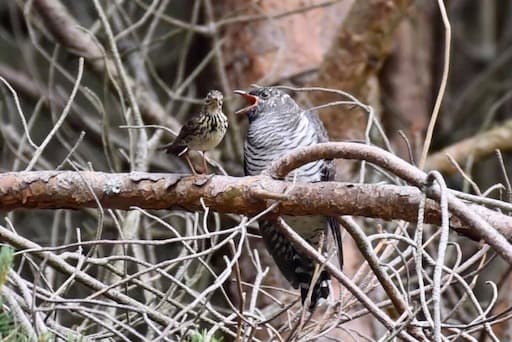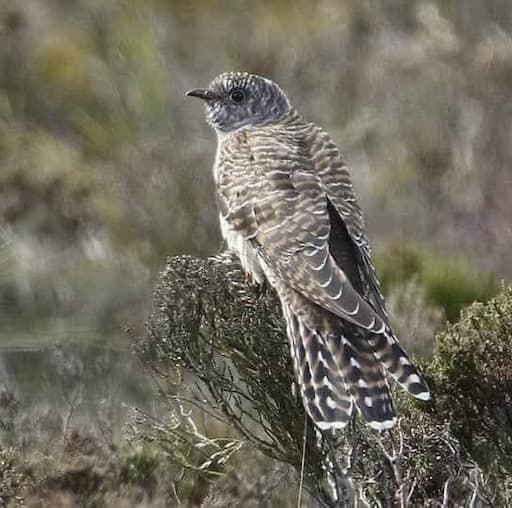Jock and The Cuckoo
The cuckoo is dove sized, with blue grey upper parts, head and chest, with dark barred white underparts and pointed wings which droop when perched. At first glance, Jock can sometimes mistake them for kestrels or sparrow hawks, with their long sleek bodies, long tails and pointed wings. Males and females look alike, and young cuckoos are brown. Cuckoos eat insects, with their top menu choice hairy caterpillars.
Jock’s favourite spring rituals at the end of April is listening out for the first male cuckoo call on Bennachie and he often goes down to check the gowk stane to see if any males are perched and calling out with their distinctive cuckoo cuckoo call. Sadly he knows there are not as many cuckoos these days.
Cuckoos don't raise their own young, they're an example of ‘brood parasites’. They lay their eggs in the other birds’ nests, such as dunnock, reed warblers or meadow pipits. The female cuckoo waits patiently for the other parents to leave their nest and she then lays her egg into their nest which matches the host eggs. She can do all this within 10 seconds! As she leaves she often makes a sort of chuckle sound, which makes the host birds suspect a sparrowhawk is around, cunningly taking their attention away from what has just happened. She will do this around 25 times in a season!
After around 11 days the egg hatches and the cuckoo nestling will push the other eggs or chicks out of the nest, so the adoptive parents only have it to feed. This hungry youngster makes begging calls to encourage the adoptive parents into feeding it, while it grows to 2 or 3 times their size!
At around 20 days it leaves the nest, but the host parents keep feeding it for another few weeks.
Cuckoos are only around for a short time and by the end of June the adults will have said goodbye to Jock and set off for their return journey to Africa, where they spend the winter. The fledglings will follow them a few weeks later.
The British Trust for Ornithology has a fascinating cuckoo project, finding that cuckoos they have tagged in the UK spend winter in central Africa, mainly in and around the Congo rainforest in the Democratic Republic of Congo, Congo and Gabon and Angola. In spring as they head north they stop over at sites in West Africa.
Watch the flight of some of their tagged cuckoos as they make their incredible journey: Cuckoo Tracking Project
Jock is very sad that their numbers are dropping; in fact by about half in the past 20 years! They have told him that their long flight south can be dangerous as they are hunted, and there are now fewer forested areas, so they are losing their habitat.
For cuckoo information and to listen to their call:


This is part of the Birds In Spring information.